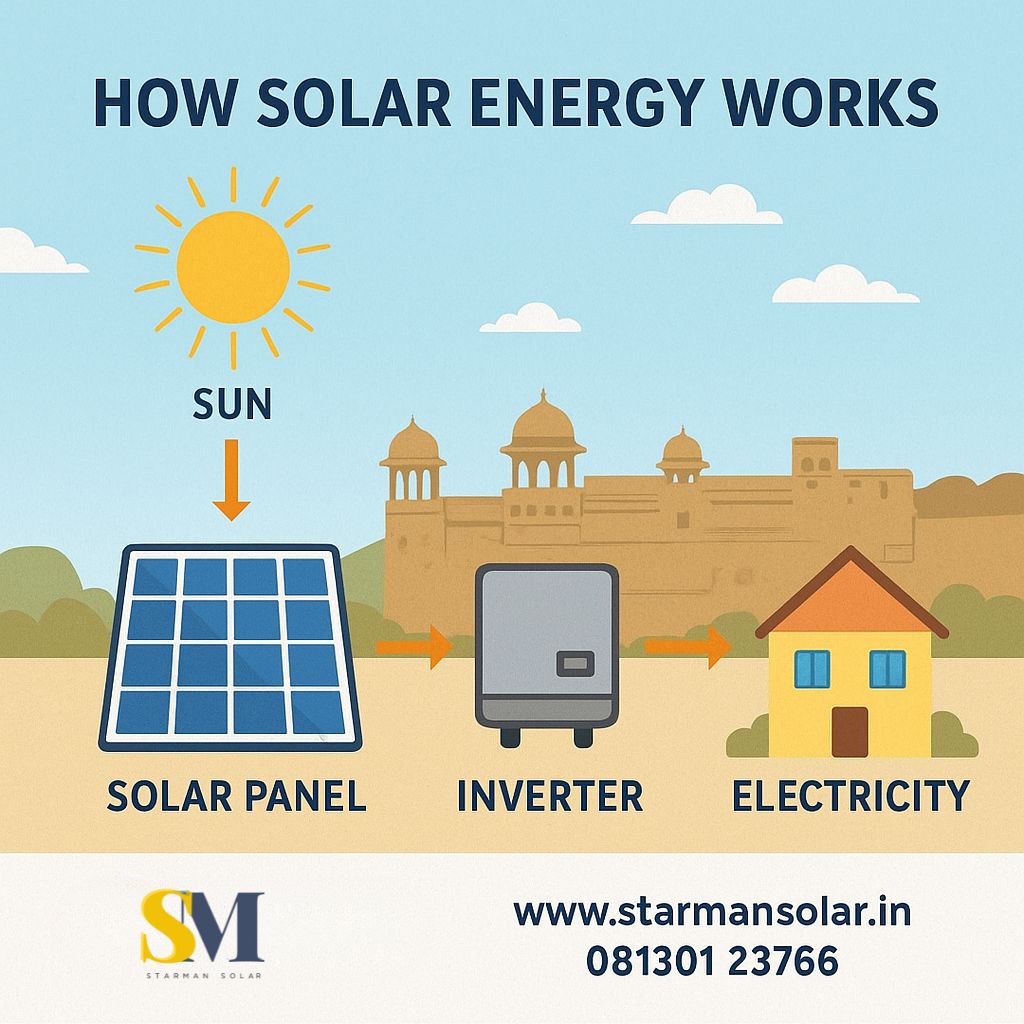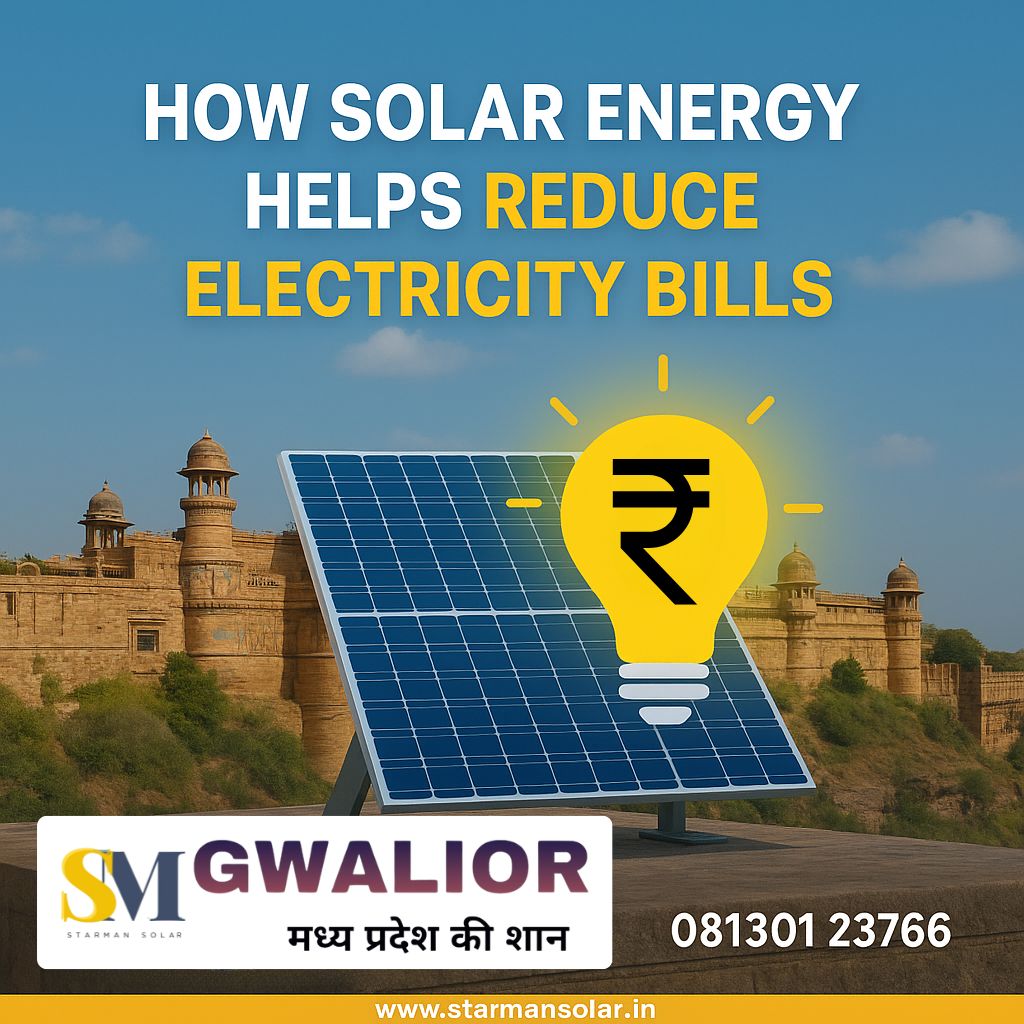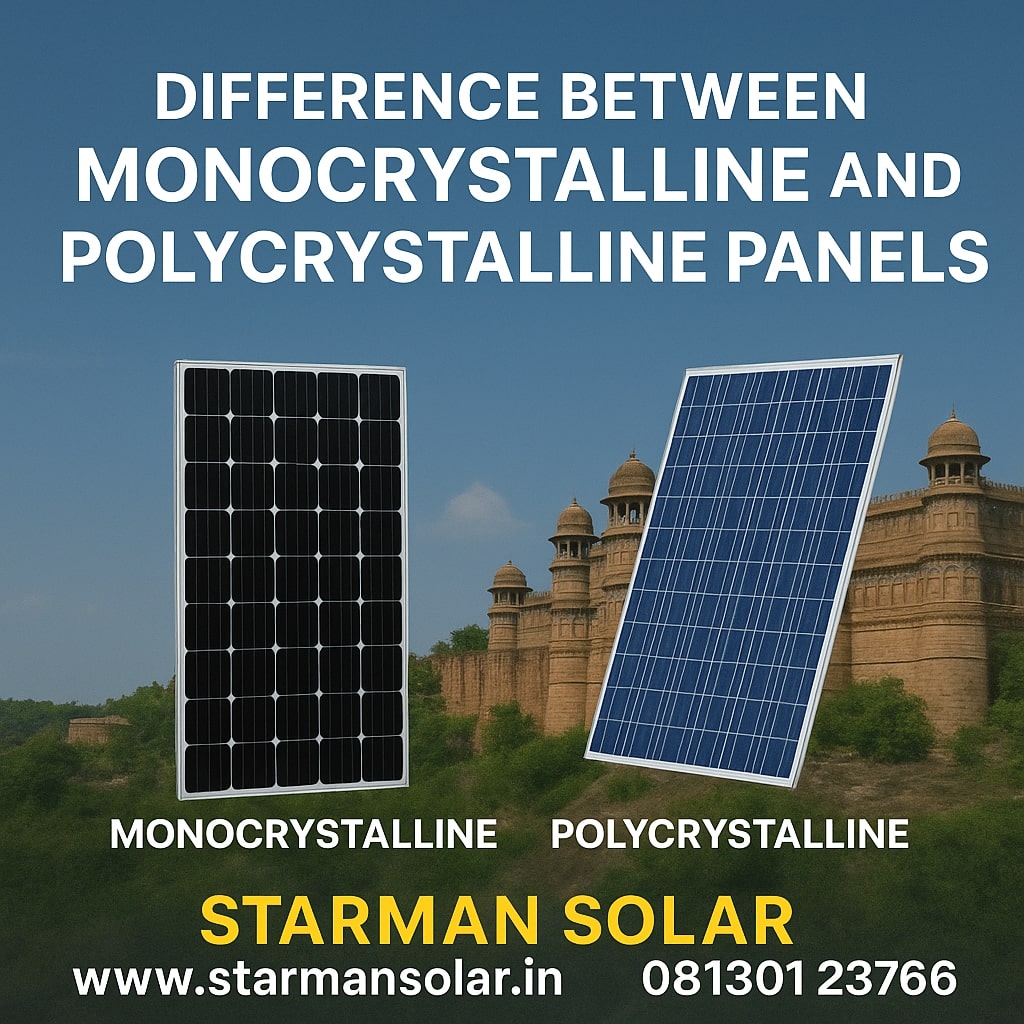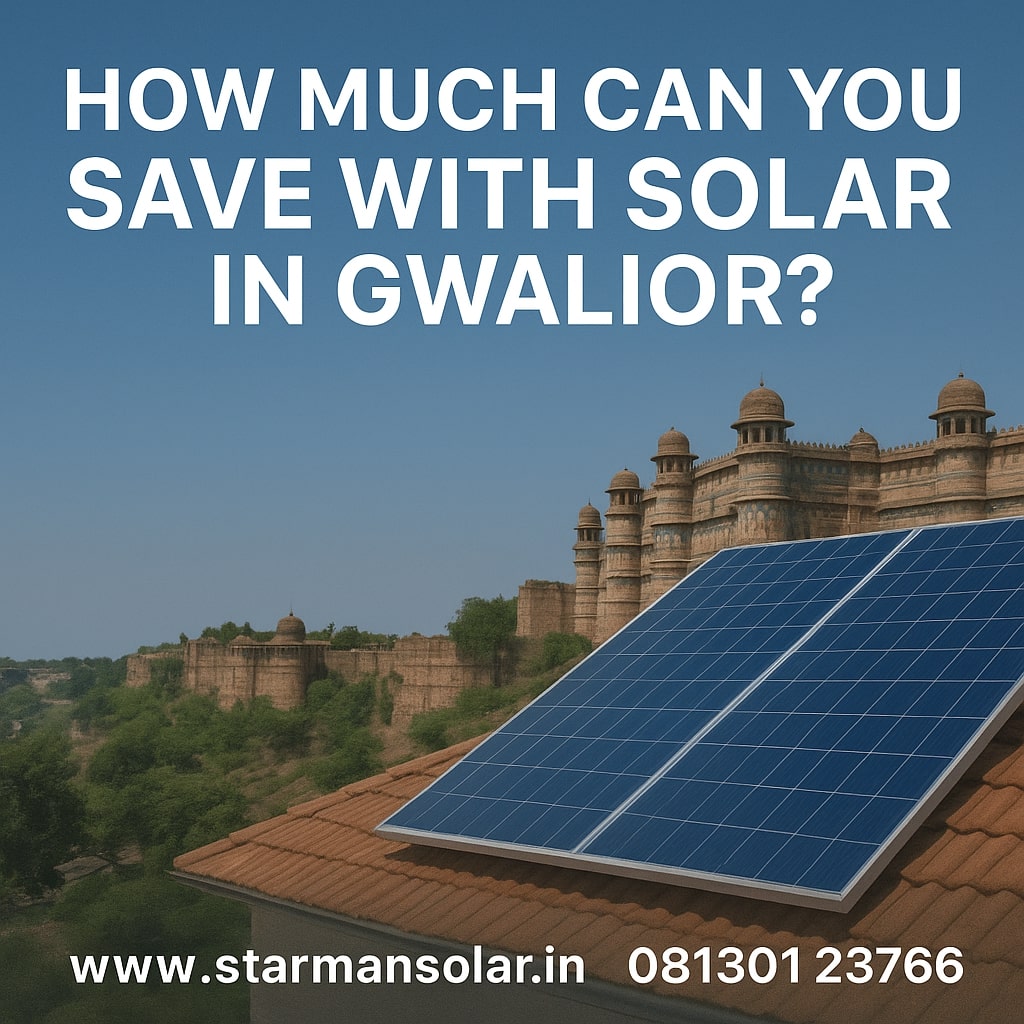How Solar Energy Works
- starman
- September 4, 2025
- 6:07 pm
- No Comments


As energy costs rise and sustainability becomes essential, solar energy is rapidly becoming the go-to solution for homes and businesses. But if you’re new to this world, you may be wondering: How does solar energy work? How do solar panels turn sunlight into usable electricity?
This beginner’s guide by Starman Solar will explain exactly how solar energy works step by step, along with key benefits and things to keep in mind when planning your solar journey.
What Is Solar Energy?
Solar energy is the power we get from the sun. Every day, the sun emits vast amounts of energy in the form of light and heat. Through solar technology—especially photovoltaic (PV) systems—we can capture and convert this energy into electricity.
This process is clean, renewable, and cost-effective, making it a great alternative to traditional energy sources. And companies like Starman Solar are making it easier for everyone to adopt this green solution.
How Solar Energy Works Step by Step
Let’s break it down clearly to understand how solar panels work step by step:
1. Sunlight Hits the Solar Panels
The process begins when sunlight hits the solar panels, typically installed on your rooftop. These panels are made of photovoltaic (PV) cells, which are designed to absorb sunlight.
2. Conversion of Light to DC Electricity
When the sun’s rays strike the PV cells, they trigger a reaction that converts solar energy into direct current (DC) electricity. This is the first form of usable energy, although your home cannot use DC directly.
3. Inverter Converts DC to AC
Since most home appliances use alternating current (AC), an inverter is used to convert DC into AC electricity. Modern inverters also manage power flow and performance data for your solar system.
4. Power Your Home
The converted AC electricity flows into your home’s electrical panel, powering your lights, fans, refrigerators, and other devices. This is essentially how solar panels work on a house—they integrate with your existing wiring.
5. Excess Power Goes to the Grid (or Batteries)
If your system generates more power than you need, the extra energy is either stored in batteries or sent to the grid. Through net metering, you can earn credits for the excess electricity your system feeds back into the utility grid.
How Is Solar Energy Converted into Electricity?
The key lies in semiconductor materials like silicon, used in solar panels. These materials absorb photons (light particles) from sunlight, causing electrons to move and generate an electric current. This is the basic principle of solar energy conversion.
Advantages of Solar Energy
Understanding how solar energy works is important, but knowing its benefits helps justify the investment. Here are some top advantages of using solar:
- ✅ Lower Electricity Bills
- ✅ Eco-Friendly and Renewable
- ✅ Low Maintenance Costs
- ✅ Increases Property Value
- ✅ Government Subsidies & Tax Benefits
- ✅ Energy Independence
Whether you’re a homeowner or a business, solar energy helps you save money and protect the environment—a win-win scenario made possible by Starman Solar, one of India’s trusted solar brands.
How Do Solar Panels Work on a House?
To summarize, here’s how solar panels function in a home setting:
- Panels on the roof absorb sunlight.
- PV cells convert it to DC power.
- Inverter changes DC to AC.
- Power is supplied to the house.
- Excess is stored or sent to the grid.
This system works seamlessly in residential setups, making it ideal for homes across India, especially in sunny regions.
Starman Solar – Powering the Future
Starman Solar specializes in residential and commercial solar installations. From consultation to setup and maintenance, we help you every step of the way. Whether you’re a beginner or looking to upgrade your energy system, our team ensures you understand how to start a solar system for beginners, and we offer easy financing, top-tier equipment, and unmatched customer support.
FAQs
1. How does solar energy work step by step?
Solar panels absorb sunlight using PV cells. This sunlight is converted into DC electricity, which is then transformed into AC using an inverter. The AC power is used to run your home, and excess electricity is stored or sent back to the grid through net metering.
2. What is the 20% rule for solar panels?
The 20% rule suggests that no more than 20% of the panel’s surface should be shaded, as shading significantly reduces energy output. Proper positioning and roof evaluation help avoid this problem.
3. How do beginners understand solar power?
Beginners can understand solar power by learning the basic steps of how sunlight turns into electricity, understanding the components involved (panels, inverters, batteries), and consulting with reliable providers like Starman Solar for practical guidance.
4. How to start a solar system for beginners?
To start with solar as a beginner:
- Analyze your energy usage
- Evaluate your roof space and sunlight exposure
- Contact a trusted provider like Starman Solar
- Choose system size (1kW, 3kW, 5kW etc.)
- Apply for government subsidy if eligible
- Get your system installed and monitored
5. How does solar energy work?
At its core, solar energy works by capturing sunlight using PV panels and converting it into electrical energy via inverters. This clean energy can then be used to power homes and devices, reducing reliance on grid electricity.
Final Thoughts
Solar power is no longer a complex concept or a luxury—it’s a smart, accessible energy solution for everyone. Understanding how solar energy works helps you make informed decisions that benefit both your wallet and the environment.
Whether you’re a curious beginner or ready to install your first system, Starman Solar is here to help with expert guidance, quality equipment, and a smooth installation process. Start your solar journey today and switch to a brighter, cleaner future.
Share:
starman
Related Posts

Founded in 2021, Starman Solar has emerged as a trusted name in renewable energy solutions in Gwalior.
Top Rated
Service 20255.0
CONtact WITH US
FOLLOW US
Starman Solar Pvt. Ltd. © 2025 All Rights Reserved | Designed By PR Digital Marketing


